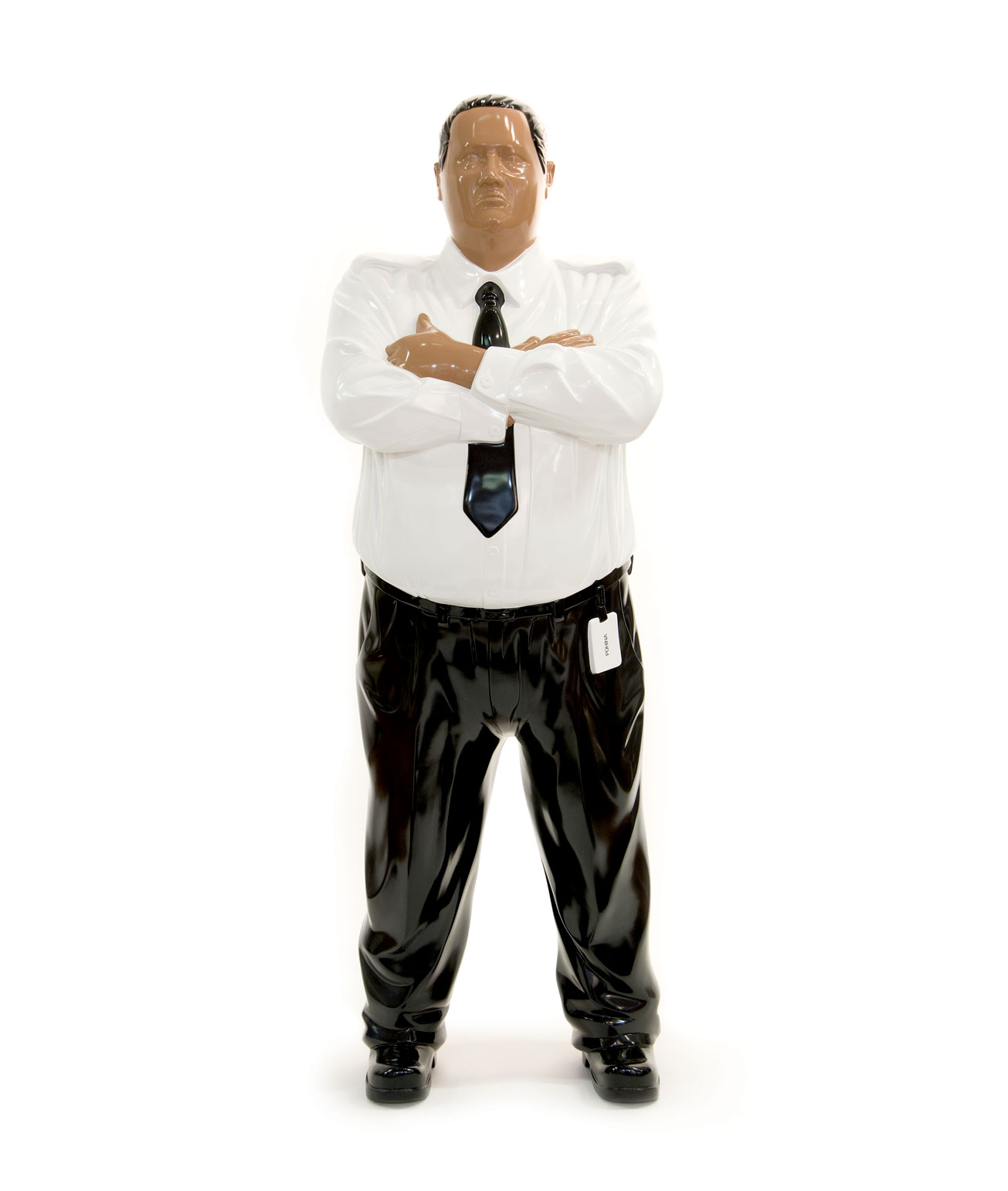Auckland Art Gallery News, March–June 2005.
Michael Parekowhai is known for toying with prevailing cultural stereotypes concerning Maori. For instance, his 1999 Ten Guitars project drew on a nostalgia for 1960s Maori showbands and the cliche of Maori as cultural performers, ‘as happy as the day is long’. While it was laden with cool ironies, Ten Guitars was ultimately positive about this now seemingly patronising and problematic image. It was all about putting differences aside and strumming our guitars in togetherness. Kapa Haka (2003) does something quite different. The work evokes a familiar cliché, one grounded in reality: the burly Maori bouncer. Parekowhai’s fifteen life-size fibreglass figures are based on a real person, his big brother Paratene, a security guard. The figures are generic, cast ‘out of the same mould’, Parekowhai compares them to chess pieces—pawns perhaps. Each figure is named for a colour, like the gangsters in Reservoir Dogs: Mr Pink, Mr White. The colour is written in Maori on each figure’s ID tag. They can be installed in groups or as individuals (they formed a phalanx at the entrance to the 2004 show Paradise Now? at New York’s Asia Society). Parekowhai plays on our recognition of bouncers’ power and authority, yet also their disenfranchisement—it is a bad job. Security guards don’t necessarily protect their own values, but their employers’. Parekowhai’s heavies appear to guard and secure whatever they are placed in front of. Because of this, the title becomes ironic, conflating kapa haka groups (as rent-a-tribe, collective, costumed, cultural performers) with the prevalence of uniformed Maori warriors in low-paid security work. And yet Parekowhai’s brothers do exude authority. If his previous works offered themselves as engaging—feel-good fun and games for the viewer—the Kapa Haka figures strike a pose of resistance: you can’t engage them in conversation, can’t access their thoughts. Kapa Haka is a study in staunch.
